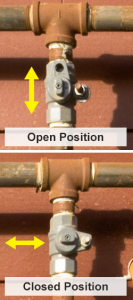Gas Incident Response Do’s and Don’ts
 Follow these important guidelines when responding to a natural gas leak, fire, or explosion. These guidelines are also available to download and print here.
Follow these important guidelines when responding to a natural gas leak, fire, or explosion. These guidelines are also available to download and print here.
Do:
- Keep {Utility Name} informed of any developments through your dispatcher.
- Consult with {Utility Name} representatives upon your arrival at the incident scene.
- Evacuate per the DOT Emergency Response Guide.
- Barricade or rope off the area, rerouting pedestrians and traffic if necessary.
- If there is a strong gas odor and/or your monitoring equipment detects natural gas nearing or exceeding concentrations of 5% gas, evacuate buildings and bystanders. (When the volume of gas in air is at least 5%, a gas meter that reads a percentage of lower explosive limit [LEL] will read 100%.)
- Instruct those in the area and building occupants not to turn any electric equipment on or off. This includes lights, appliances, motors, circuit breakers, and any battery-powered devices.
- Check other buildings in the surrounding area for the presence of gas.
- Call your dispatcher if the situation warrants a discontinuation of electric service to a building.
Don’t:
- Don’t enter buildings unless gas concentrations are confirmed to be below 5% and you are wearing personal protective equipment (PPE) and positive pressure self-contained breathing apparatus (SCBA).
- Don’t try to extinguish burning gas.
- Don’t operate any gas valves other than the aboveground shutoff valve before the service meter or appliance supply line shutoff valves.
- Don’t open any gas valve that has been shut off.
- Don’t park vehicles nearby or leave engines running if a street leak is suspected.
- Don’t park in front of buildings where a gas leak is suspected.
- Don’t park directly over manhole covers or near storm sewer grates.
- Don’t ventilate a building without first coordinating with {Utility Name} and verifying gas has been shut off and ignition sources have been eliminated.

